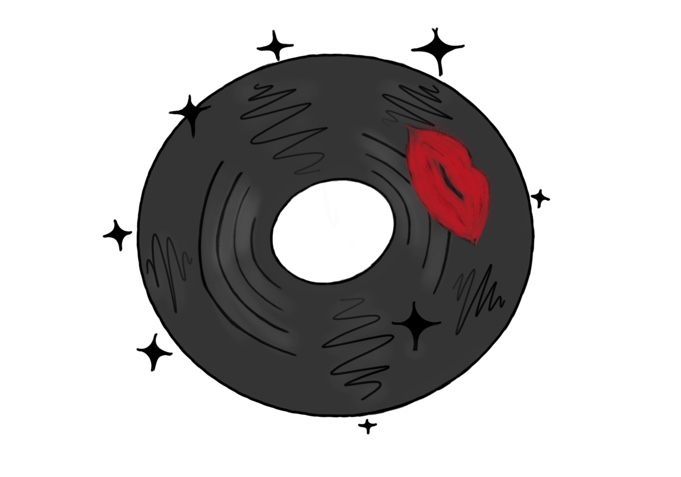The Assassin’s Creed series is rated M for Mature.
Ratonhnhaké:ton (who adopted the name Connor) moved stealthily toward the man threatening his tribe, darting between patrols and moving effortlessly above from tree to tree. Successfully evading hostility, he finds a vantage point to spy on the man. After failed negotiations, the Mohawk men find themselves facing the wrong end of a musket. Springing into action, blade raised, Connor jumps toward the man threating his tribe, a Templar under a not-so-holy cross.
When I first heard the about the setting for Assassin’s Creed III, I feared Ubisoft, the game’s developer, would make a “rah rah ‘murica,” game. Not too long into it, my worries were assuaged. True to the game series, Ubisoft kept nationalism out while weaving in the shadowy actions of the Templars and Assassins.
After a download time on the scale of days, I opened the game to an epic musical theme. While most of the games have had distinct soundtracks, the series as a whole has been gifted with talented musicians who set a fittingly legendary tone to the games.
On top of that, the design of Assassin’s Creed III is incredible. My computer couldn’t handle the full graphics – even at the lowest settings (and the highest resolution), the environment was mind blowing.
The story opened right where the previous game, Assassin’s Creed: Revelations, ended, with Desmond Miles waking up from a coma in the Animus, a machine from antiquity that allows the user to relive the memories of his/her ancestor, which are hidden in the DNA of every person.
The Animus is one of many “pieces of Eden,” ancient artifacts made by a mysterious and mystic race that precedes humans. These pieces of technology range from shrouds to staffs, with the most common being “Apples of Eden.” The apples grant the user the ability to control the minds and actions of humans in their vicinity. With an apple, one could indoctrinate an entire mass of people to do his/her will, precisely what the first race, The Ones Who Came Before, did. If all of humanity was controlled, world peace would be viable.
But at what cost? Is it worth the freedom of all humans and the disintegration of cultures to achieve peace?
This is where the Assassins and Templars draw contention. Both seek the same end, a world of peace, but while the Assassins prefer to empower the masses and preserve liberties and freedoms, the Templars would use total power to force peace.
However, a threat even greater than the Templars looms for the Assassins. Desmond Miles, the protagonist in the current day, relives the memory of his ancestor, the half-English, half-Mohawk Connor during the years of the Revolutionary War, in hopes of solving the crisis. Miles, who The Ones Who Came Before chose to save Earth millennia ago, is the world’s only hope.
As with the previous installments, there are two layers to the game. The player can either explore the surroundings as Miles in the present day and engage in conversation with his fellow Assassins or travel the colonial Northeast in search of a mysterious key in the Animus.
If the player chooses to spend time in the Assassin’s “hideout,” the temple, he/she discovers messages from the Ones Who Came Before, along with a rather tenuous relationship that Miles and his father hold. Miles also has a computer set up near the Animus, where he can check his email when he is in the present day. Halfway through the game, intriguingly, he starts to receive cryptic messages that grow coherent and drew my attention.
However, Ubisoft added something a little extra to the present day gameplay. There are missions unique to Miles, where the player actually uses the skills Miles learned in the Animus on assignments in the field. I’ve been looking forward to gameplay of this sort with Miles for quite a while, and Ubisoft delivers.

In the Animus, Ubisoft has crafted an epic protagonist that, while not as legendary as Ezio Auditore da Firenze from the previous games, has an appealing backstory and motives. In saving his tribe, the game presents missions that are as immersive and exciting as some of the endgame missions from
Assassin’s Creed III
As Connor fights for his tribe, he finds himself caught in the brewing conflict between the colonists and British, meeting the prominent figures of the day and taking part in events such as the Boston Tea Party and Battle of Lexington and Concord to try and save his people. Here, Ubisoft shines, portraying the history and cultures accurately while still putting their own twist on it. In order to represent the Mohawk people and their culture accurately, Ubisoft consulted a member of the Mohawk tribe, which of all things about
, made me proud of the company. In a time where game companies seem to just care about profits, Ubisoft’s actions set it aside from the rest of the rabble.
In terms of game mechanics, Ubisoft announced a new combat system in the weeks leading up to the game’s release, claiming that a player could seamlessly enter and leave combat. I’ve found, in general, the game’s combat plays similar to before, albeit with a small learning curve, as the controls have been remapped yet again. However, it is true that I can assassinate a Templar brutally while running and then continue on my way. In general, the new combat is more brutal, involving tomahawks to the face, human shields from firing lines and rope darts for hanging enemies.
Not only has Ubisoft improved on an original system, they have introduced several new ones into the game. As Connor is of Mohawk descent, the player can hunt and trap animals in the Frontier and skin his/her kill. However, while hunting, the player must also be aware of predators on the prowl. I’ve encountered a number of bloodthirsty wolves in my own experience. My only gripe with the system is how easily the player can hunt with just a tomahawk and not use baits and snares.
And speaking of animals, the game lets you pet wandering farm animals, cats and dogs, as well. That should be a selling point right there. In general though, the hunting system is an exemplary piece of work.
With these new resources from animals, the player can either sell them to stores or use them to craft new materials, such as ammunition or new weapons. The crafting system is again new, but it looks quite promising. In order to craft items, the player must discover recipes, often scattered in treasure chests around the Northeast, as well as attract new settlers to their homestead through optional missions.
Oh, I forgot to mention. There’s a new naval war aspect to the game as well. Where you take control of a ship. To sail the seas and blow ships up. No more explanation needed.
As well, the multiplayer aspect of the game introduces a few new systems, under “Abstergo Entertainment” that innovate on the previous system while keeping the essentials. The multiplayer game includes hidden secrets to discover as you “level up.”
Although the game has a number of annoying on-release downloadable content packs, the downloadable content does not leave the game half-complete. For the first time, Ubisoft plans to release a series of these packs as a “What if…” months after the game’s release, with the first pack already available. This entire sequence of packs can be bought with a “season pass.”
And what exactly is this “What If” scenario? If George Washington were king. But of course.
In general, Ubisoft has outdone themselves with Assassin’s Creed III in regards to music, plot, gameplay and mechanics. The combination of revamped and new systems contributes to an amazing experience that will mark Assassin’s Creed III aside from the other video games this fall and winter.
By Atreyo GhoshSo, have you played yet? What is your favorite part(s)?
Assassin’s Creed III was released on Oct. 30 for all gaming platforms except for the PC, which saw the game on Nov. 20. The fifth and final installment to at least Desmond’s story, if not the entire franchise, is available for purchase at $49.99, or $79.99 for the deluxe edition, in stores and online on Steam, the Ubisoft store and amazon.com.
















































































